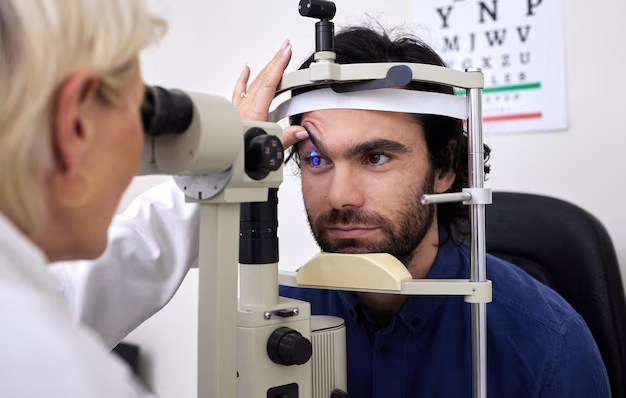Discovering Solutions: How Can You Treat Cataracts Effectively?
Cataracts cloud the lens of the eye, making it difficult for many to enjoy a clear view of the world around them. As a common condition, particularly in older adults, understanding how to treat cataracts becomes crucial. This guide is crafted to explore treatments, delve into causes, and provide comprehensive insights into managing this condition. If you're ready to see more clearly, let's dive into the world of cataracts and uncover the methods to handle them effectively.
What Are Cataracts?
A cataract is a clouding of the lens in the eye that affects vision. While they're often related to aging, cataracts can also develop from other factors. Common symptoms include blurred vision, difficulty with night vision, sensitivity to light, and seeing "halos" around lights.
Causes and Risk Factors
- Aging: The most prevalent cause is the natural aging process.
- Diabetes: Those with diabetes are at a higher risk.
- Eye Injuries: Previous injuries can lead to cataract development.
- Genetic Factors: Family history may play a role.
- Excessive Sun Exposure: Prolonged exposure to UV rays can contribute.
Pro Tip: Wearing sunglasses that block UV rays can help reduce the risk.
Exploring Treatment Options
Treating cataracts typically involves surgery, but understanding the nuances can help you make informed decisions. Here's what you need to know:
Non-Surgical Management
Before considering surgery, some individuals explore non-surgical options, though they don't "cure" cataracts. These methods can help manage symptoms temporarily:
- Stronger Eyeglasses: Updated prescriptions might improve vision slightly.
- Magnifying Lenses: Useful for reading and detailed tasks.
- Anti-Glare Sunglasses: Help with light sensitivity.
Cataract Surgery
When cataracts begin to affect quality of life, surgery often becomes the recommended choice. Modern surgery is safe and typically performed on an outpatient basis.
Types of Surgery
Phacoemulsification (Phaco): The most common method involves using ultrasonic waves to break up the cloudy lens before removal.
Extracapsular Cataract Extraction (ECCE): In some cases, a larger segment of the lens is removed, often in more advanced cataracts.
Intracapsular Cataract Extraction (ICCE): Rarely used today, this includes the removal of the lens and the surrounding capsule.
Overview of the Procedure:
- Preparation: Anesthesia is administered to numb the eye.
- Lens Removal: The cloudy lens is removed.
- IOL Placement: An artificial lens, known as an intraocular lens (IOL), is inserted.
Aftercare and Recovery
Post-surgery care is crucial for a smooth recovery:
- Use Eye Drops as Directed: Anti-inflammatory and antibiotic drops help prevent infection.
- Avoid Strenuous Activities: These can put pressure on the eye.
- Wear Protective Eyewear: Shields from potential injury or exposure.
Important Reminder: Always follow the surgeon's specific aftercare instructions.
Innovations in Cataract Treatment
The field of ophthalmology is continuously evolving, bringing new techniques and technologies for cataract management:
Laser-Assisted Surgery
Laser-assisted procedures enhance precision and can reduce healing time. Though not universal across all practices, they are gaining popularity for certain candidates.
Advanced IOLs
Intraocular lenses now come in various designs, accommodating different visual needs, such as bifocal and trifocal lenses that can aid both near and far vision.
Related Considerations and FAQs
Can Cataracts Be Prevented?
While aging is inevitable, certain lifestyle changes can mitigate risks:
- Healthy Diet: A diet rich in vitamins C and E, lutein, and zeaxanthin supports eye health.
- Quit Smoking: Smoking can accelerate cataract formation.
- Regular Eye Exams: Early detection through routine check-ups can help manage cataracts effectively.
FAQs About Cataracts
How fast do cataracts progress?
- Cataract progression varies from person to person. Some may experience rapid progression, while for others, it might take years.
Can cataracts re-develop after surgery?
- A cataract does not reoccur, but a condition called posterior capsule opacification can develop, which is easily treatable with a laser procedure.
Is cataract surgery painful?
- The surgery itself is typically not painful due to the use of local anesthesia, though mild discomfort might occur post-surgery.
Visual Summary: Key Takeaways for Managing Cataracts
Here's a quick bullet-point guide to help you navigate cataract management:
- 👓 Regular Eye Exams: Catch problems early for better outcomes.
- 🥗 Eat a Balanced Diet: Include eye-supportive nutrients.
- 🚫 Avoid Smoking: Protects your vision long-term.
- 🕶️ Wear Sunglasses: Reduces UV exposure risks.
- 📅 Schedule Consultations: Discuss the timing of surgery with a specialist.
Armed with this understanding, you're now better equipped to explore all avenues in treating cataracts effectively. Whether through lifestyle adjustments, enhancements in eyewear, or surgical solutions, clarity is within reach. Remember, maintaining eye health is an ongoing journey, built on informed choices and proactive care.
